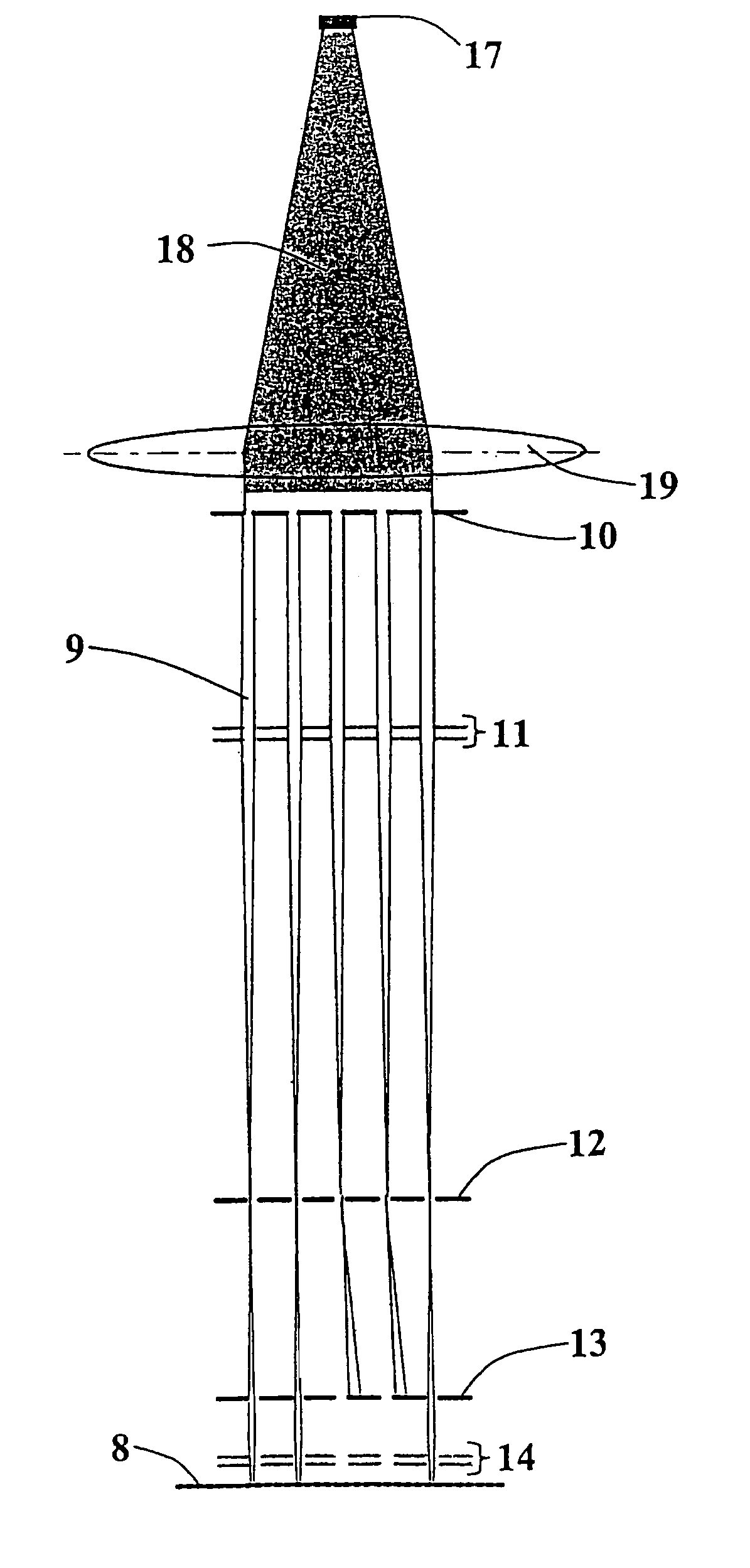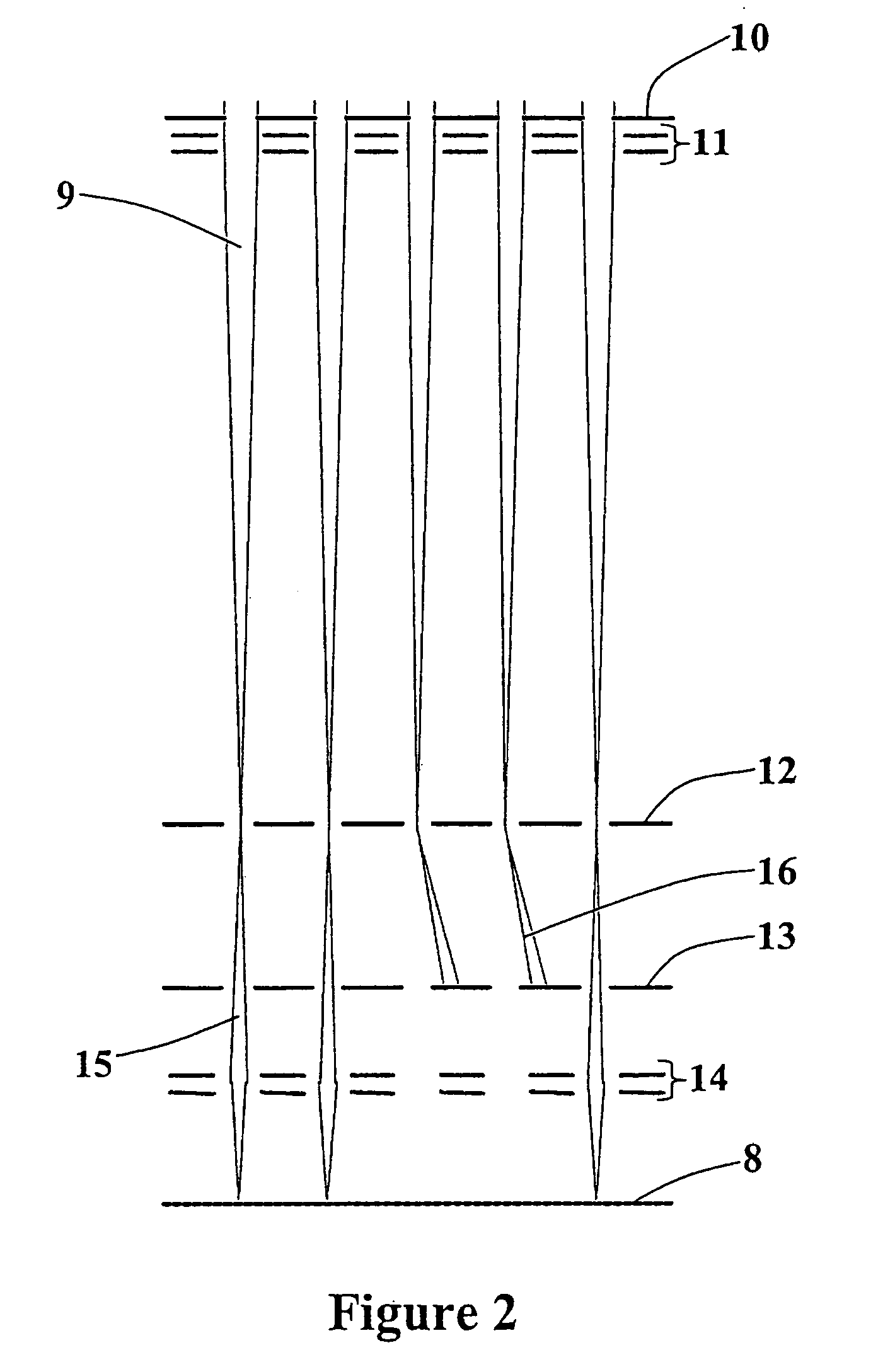Charged particle beamlet exposure system
a beamlet exposure and charge technology, applied in the field of chargeable particle optical systems, can solve the problems of increasing the cost of masks currently used for providing patterns, limiting the throughput of current maskless lithography systems, and affecting the accuracy of the beamlet exposure. achieve the effect of improving speed and stability
- Summary
- Abstract
- Description
- Claims
- Application Information
AI Technical Summary
Benefits of technology
Problems solved by technology
Method used
Image
Examples
Embodiment Construction
[0044]FIG. 1 shows cross section along the optical axis of a charged particle beam exposure apparatus comprising a charged particle source, two apertures, two lenses and one electrostatic deflector. The FIG. 1A shows a top-view of FIG. 1
[0045]The source 1 emits a diverging charged particle beam 2. The first aperture 3, being substantially round, limits the opening angle of the beam impinging on the first lens 4. Additionally it takes heat away from the system, thereby enhancing the performance of the first lens 4. Said lens 4 focuses the beam substantially on the plane of the electrostatic deflector 5. Upon the reception of control signals, the deflector 5 deflects the passing charged particle beam. The second aperture 6, being substantially round, can have several purposes. First of all it may limit the opening angle of the beam falling on the second lens 7. Secondly it blocks the beam when deflected by the electrostatic deflector 5. When the beam is transmitted through the second ...
PUM
 Login to View More
Login to View More Abstract
Description
Claims
Application Information
 Login to View More
Login to View More - R&D
- Intellectual Property
- Life Sciences
- Materials
- Tech Scout
- Unparalleled Data Quality
- Higher Quality Content
- 60% Fewer Hallucinations
Browse by: Latest US Patents, China's latest patents, Technical Efficacy Thesaurus, Application Domain, Technology Topic, Popular Technical Reports.
© 2025 PatSnap. All rights reserved.Legal|Privacy policy|Modern Slavery Act Transparency Statement|Sitemap|About US| Contact US: help@patsnap.com



